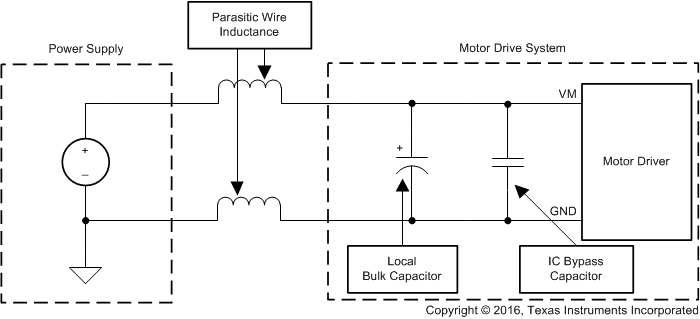SLVSB17D March 2012 – April 2016 DRV8836
PRODUCTION DATA.
9 Power Supply Recommendations
9.1 Bulk Capacitance
The appropriate local bulk capacitance is an important factor in motor drive system design. More bulk capacitance is generally beneficial but may increase costs and physical size.
The amount of local capacitance needed depends on a variety of factors, including:
- The highest current required by the motor system
- The power supply’s capacitance and ability to source current
- The amount of parasitic inductance between the power supply and motor system
- The acceptable voltage ripple
- The type of motor used (brushed DC, brushless DC, stepper)
- The motor braking method
The inductance between the power supply and motor drive system limits the rate current changes from the power supply. If the local bulk capacitance is too small, the system responds to excessive current demands or dumps from the motor with a change in voltage. When adequate bulk capacitance is used, the motor voltage remains stable and high current can be quickly supplied.
The datasheet provides a recommended value, but system-level testing is required to determine the appropriate sized bulk capacitor.
 Figure 7. Bulk Capacitor
Figure 7. Bulk Capacitor